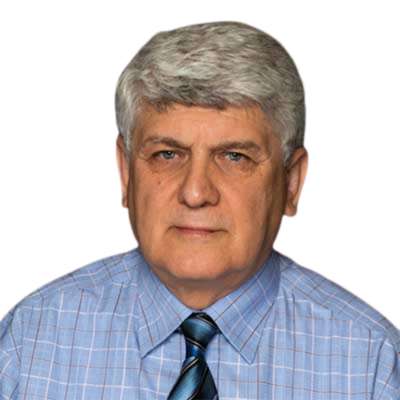
Faik Musayev, Ph.D.
Research Associate Professor and Manager, VCU Structural Biology Core
Department of Medicinal Chemistry
Faik Musayev, Ph.D., is involved in collaborative research in elucidating the mechanisms underlying vitamin B6 metabolism and regulation. Pyridoxal kinase (PL kinase) and pyridoxine 5’-phophate oxidase (PNPOx) are the two vitamin B6 salvage enzymes involved in the metabolism of primary inactive vitamin B6 into the active cofactor form, pyridoxal 5-phosphate (PLP). Enzyme kinetics/binding and X-ray crystallography have been instrumental in characterizing PL kinase and PNPox, providing critical insight into how these salvage enzymes produce and regulate PLP and contributed to our understanding of pathologies associated with pathogenic mutation in PNPOx and drug inhibition of PL kinase.
Another key collaborative research project is in sickle cell drug (SCD) discovery. A therapeutic strategy is to use agents that increase HbS affinity for oxygen to prevent HbS polymerization and the concomitant RBC sickling. The group uses X-ray crystallography to help iteratively design antisickling compounds with improved pharmacologic activity for the treatment of SCD.
Musayev is also involved in the development and analysis of selective inhibitors of type II Fatty acid synthases (FASs). Plant and bacterial fatty acid biosynthesis is catalyzed by FASs. One component of these FASs, 3-ketoacyl-acyl carrier protein synthase III (KASIII/or FabH) is being studied as a therapeutic target in Mycobacterium tuberculosis (TB). The long-term objective of the research project was to build detailed understanding of the structural and mechanistic bases for both the physiological roles of FabH enzymes and their inhibition by newly discovered inhibitors, and to use this information to generate both more potent and selective FabH inhibitors.
Gene therapy is an approach to serious genetic disease in which an exogenous gene is introduced to correct for a defective or missing protein or to affect a biochemical pathway. Adeno-associated virus (AVV-2), unique among animal viruses in its ability to integrate into a specific chromosomal location, is a promising vector for human gene therapy. The integration site known as AAVS1 is located in chromosome 19 and contains multiple GCTC repeats that are recognized by the AAV non-structural Rep proteins. To understand the mechanisms underlying AAV Rep function, Faik Musayev and collaborators investigated the cryo-EM and X-ray structures of Rep68-DNA complexes. Overall, the studies show the structural basis of AAV Rep’s structural flexibility, which is required to fulfill its multifunctional role during the AAV life cycle.
Another research interest of Musayev is to define the molecular and structural basis of Hybrid Cluster Protein Transcriptional Regulation (HcpR) in Porphyromonas gingivalis. Porphyromonas gingivalis is a Gram-negative anaerobic bacterium that has been demonstrated to play a role in the development and progression of chronic adult periodontitis. Understanding the molecular mechanisms and the structural properties of HcpR is essential to understanding its role in bacterial stress response and its potential as a therapeutic target. In this study the group plans to determine the molecular mechanism of HcpR through determination of the full-length structure of the holo-regulator in complex with DNA using a combination of structural biology approaches.